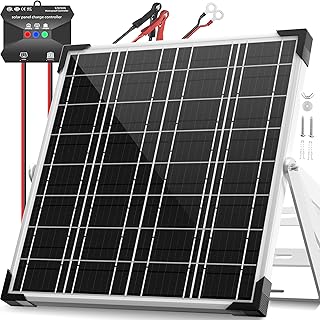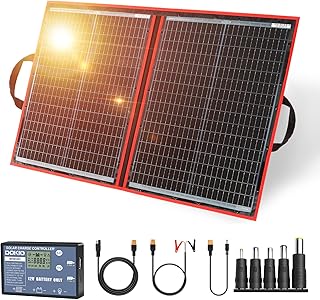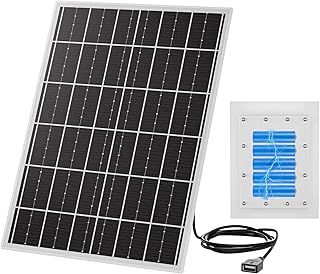Turning a pair of bicycles into a solar-powered vehicle is the innovative project showcased by Drew Builds Stuff. Using 20″ steel framed fat tire bikes, Drew welded a simple steel chassis and incorporated partial bicycle frames and forks as the front wheels. The rear driving wheels were sourced from a 20″ e-bike conversion kit, providing the vehicle with a top speed of 45km/h and a battery range of 100km.
The solar aspect of the build involved mounting three 175W flexible solar panels on cedar frames, significantly reducing weight compared to conventional rigid panels. The vehicle’s battery storage comprised two 24V 100Ah batteries wired in series, connected to a 60A solar charge controller and e-bike motor controllers.
While the solar car may not be optimized for maximum efficiency, Drew emphasizes the fun and simplicity of the build process. The vehicle’s design offers a unique approach to harnessing solar power for transportation, showcasing the potential for integrating renewable energy sources into everyday vehicles.
Adding solar panels to existing e-bikes or electric cars presents a viable option for enhancing sustainability in transportation. By leveraging solar energy, individuals can reduce their carbon footprint and explore alternative power sources for eco-friendly mobility solutions.
Discussions around the feasibility of solar-powered vehicles in different climates raise considerations about energy efficiency and practicality. Factors such as solar panel output in varying regions and the impact of weather conditions on vehicle performance play a crucial role in determining the viability of solar-powered transportation options.
Feedback and suggestions from the community highlight the interest and curiosity surrounding solar-powered vehicles. Debates on integrating wind turbines for additional energy generation and optimizing power consumption reflect ongoing innovation and exploration in sustainable transportation technologies.
Technical insights and recommendations from experts underscore the importance of efficient design and component placement in solar-powered vehicles. Attention to detail, such as switch placement and wiring configurations, can enhance safety and functionality, ensuring optimal performance and longevity of the vehicle.
Historically, the evolution of renewable energy technologies has paved the way for advancements in sustainable transportation solutions. Innovations like Drew’s solar-powered vehicle demonstrate the intersection of engineering, environmental consciousness, and creativity in developing eco-friendly mobility alternatives.
As the automotive industry continues to embrace electric and alternative fuel vehicles, the integration of solar power presents a promising avenue for reducing reliance on traditional fossil fuels. Projects like Drew’s serve as inspiring examples of how individuals can contribute to a greener future through innovative engineering and sustainable practices.
📰 Related Articles
- Kia EV4: Stylish, Eco-Friendly Electric Vehicle Expands Lineup
- Innovative Wedding Invitation Trends for 2025: Eco-Friendly to Tech-Savvy
- Innovative Stretch Stick: Eco-Friendly Travel Essential for Sustainable Adventures
- Innovative Project Democratizes Instructional Design with AI Chatbot ALDA
- Škoda Enyaq Interior: Sustainable Luxury and Innovative Features
📚Book Titles
- Shadows in the Corridors of Power: An Analysis of Hidden Projects and Covert Operations that Shaped Modern America
- Dinosaur Time: The Prehistoric Plant-Based Diet for Modern Health
- The Merkers Mystery: Hidden Treasures of a World at War
- Unveiling the Shadows: The Profound Quest to Decode the Dark Universe






